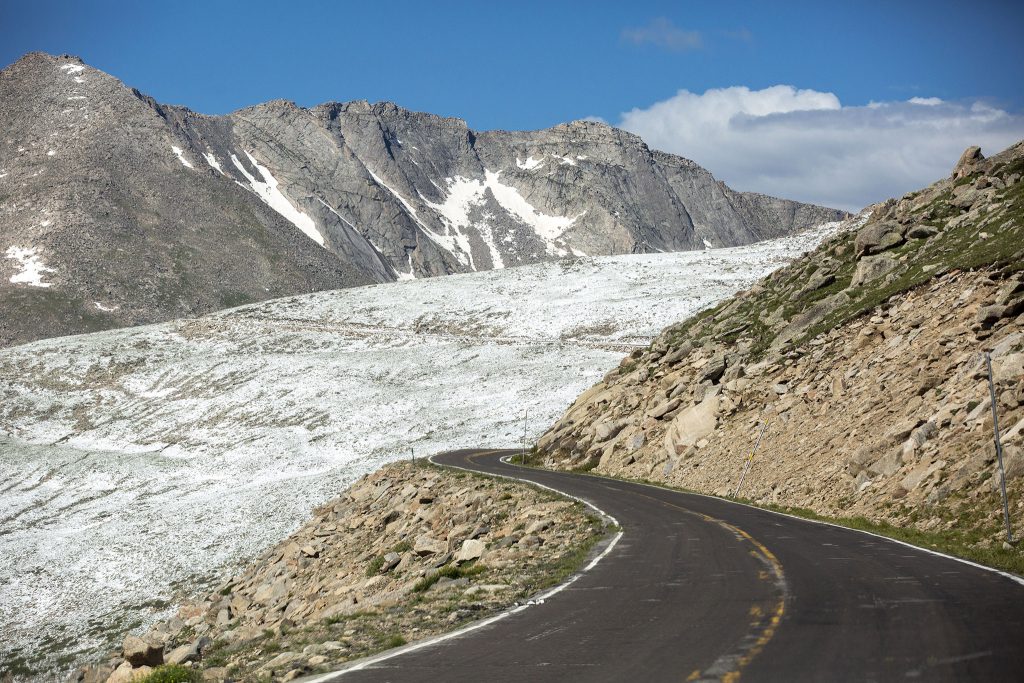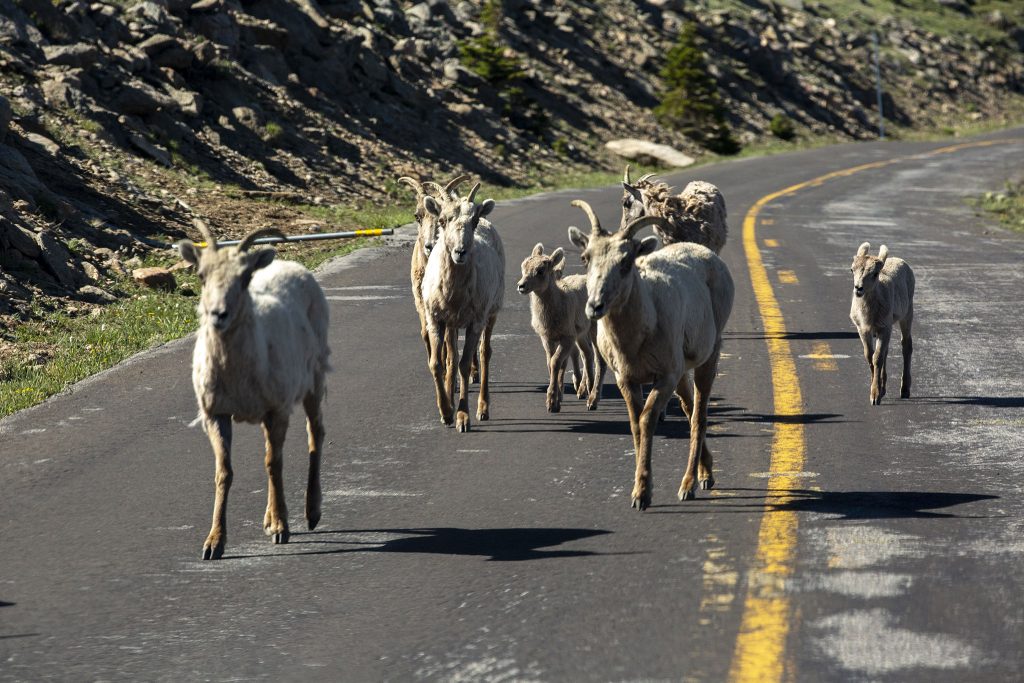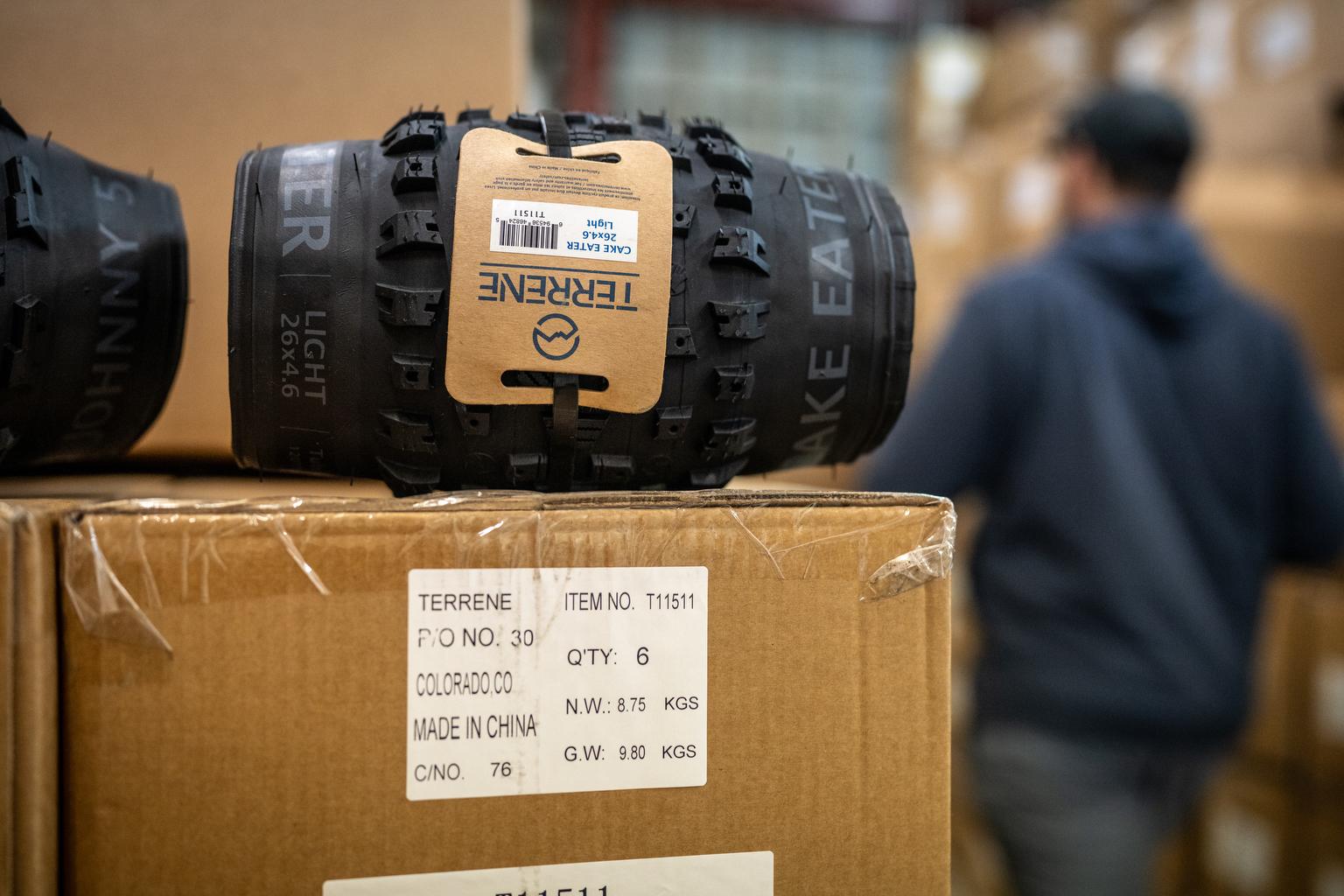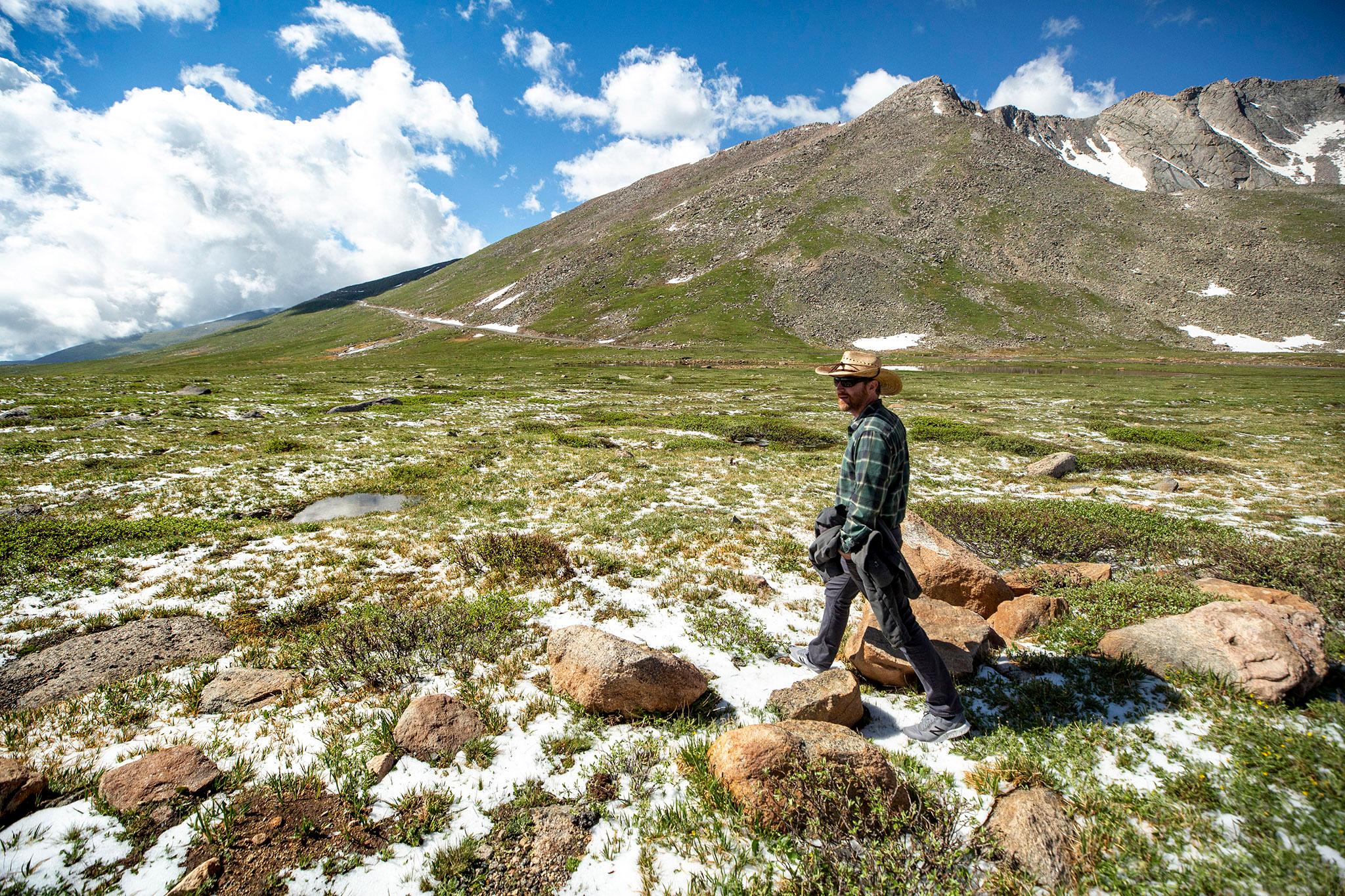
Anyone can spot — and feel — the first problem with the Mt. Evans Highway as it approaches Summit Lake at nearly 13,000 feet.
“It’s like, roly-poly bumpy,” said Maria Gorecki of Boulder on a recent morning from the Summit Lake parking lot.
The highway — the highest paved road in North America — dips and heaves up to three feet in some spots and is in clear need of repair.
The second problem requires a better-trained eye to notice.
The road itself is wreaking havoc on the land near it, starving some areas of water and flooding others and changing the fragile landscape that draws tourists from around the world.
“People come up here for the ecosystems. People come up here for the flowers,” said Colorado State University research scientist Jeremy Shaw. “If we start eliminating species from this landscape, the flower show is going to start to get less interesting for us.”
Shaw and other scientists published a study earlier this month that could guide the federal government as it prepares to fix this particularly bad stretch of the road. If done correctly, they say, a rebuilt road could offer smoother rides and help correct decades of environmental damage.
The Mt. Evans Highway is no ordinary road
“Practically continuous” rain, hail and snow made the use of heavy equipment impractical during construction in 1923, a report from the time said. Work crews, who, “with a shovel, hammer and drill, dynamite and determination, and copious amounts of Copenhagen snuff, literally forced the work through by hand.”
A British newsreel called the finished product, which opened to motorists in 1931, a “triumph of man’s engineering skill.”
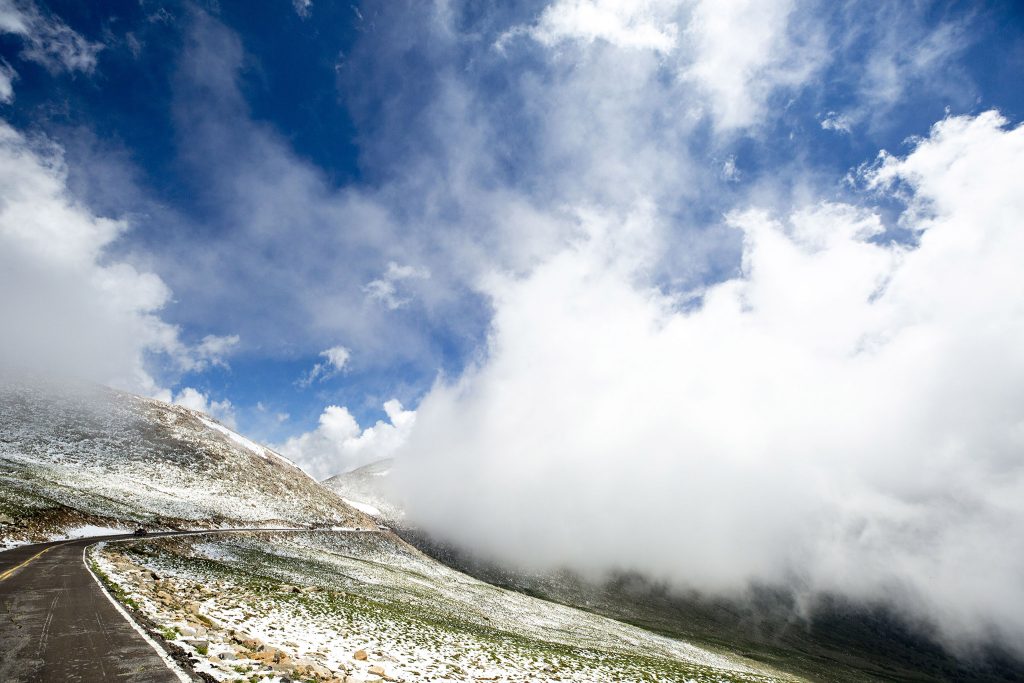
But the road, especially a three-quarter-mile section near Summit Lake, has deteriorated significantly in recent decades. After years of study by the Colorado Department of Transportation and Colorado State University, scientists now know why — and what can be done to fix it.
The first factor is the ground underneath the road, said Francesca Tordonato, an environmental program manager and ecologist at CDOT. At nearly 13,000 feet, the ground is frozen about five feet below the surface. But the highway, which was paved in the 1950s, soaks up heat from the sun and melts permafrost up to about 15 feet below the surface.
“You get into these freeze-thaw cycles that cause frost heave, where portions of the road actually buckle up,” she said. The road sinks when the ground melts again, she said, creating a “mini roller coaster.”
That freeze-thaw process causes damage on its own, but water makes it oh-so-much worse
Above the road, snow melts and cascades more or less evenly down the mountain slope. But then it hits a ditch right next to the road and turns into a channel. Some of that water seeps under the road, which helps conduct heat and melt more of the permafrost below it. That thawed soil can hold more moisture and heat.
“It’s just this runaway feedback loop,” Shaw said.
Water also rushes down the roadside ditch and underneath it through culverts. That diversion, along with the warming climate, is changing the landscape.
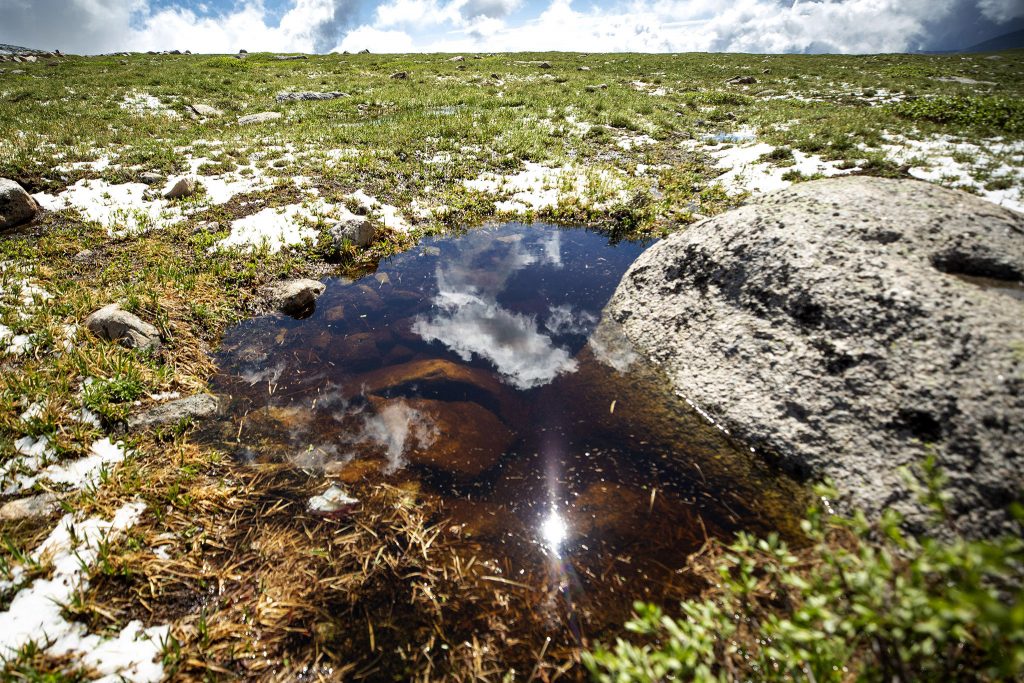
“In areas where it's dried up, we found that certain mosses and plant species were eliminated,” Shaw said. “A lot of these pools are unvegetated just bare sediment bottoms, and they are being invaded by subalpine plant species that normally don't occur in the alpine.”
There’s too much water in other places. Just one type of grass has survived in a flooded area below the parking lot, creating a monocultural lawn.
Allowing water to flow as naturally as possible is key to reducing road damage and restoring the landscape
Ditches and culverts are typical road-building methods that don’t work in high-elevation areas, Shaw said. He also noted that a section of the road near Summit Lake had been patched so many times that a core sample showed asphalt three feet thick in some places.
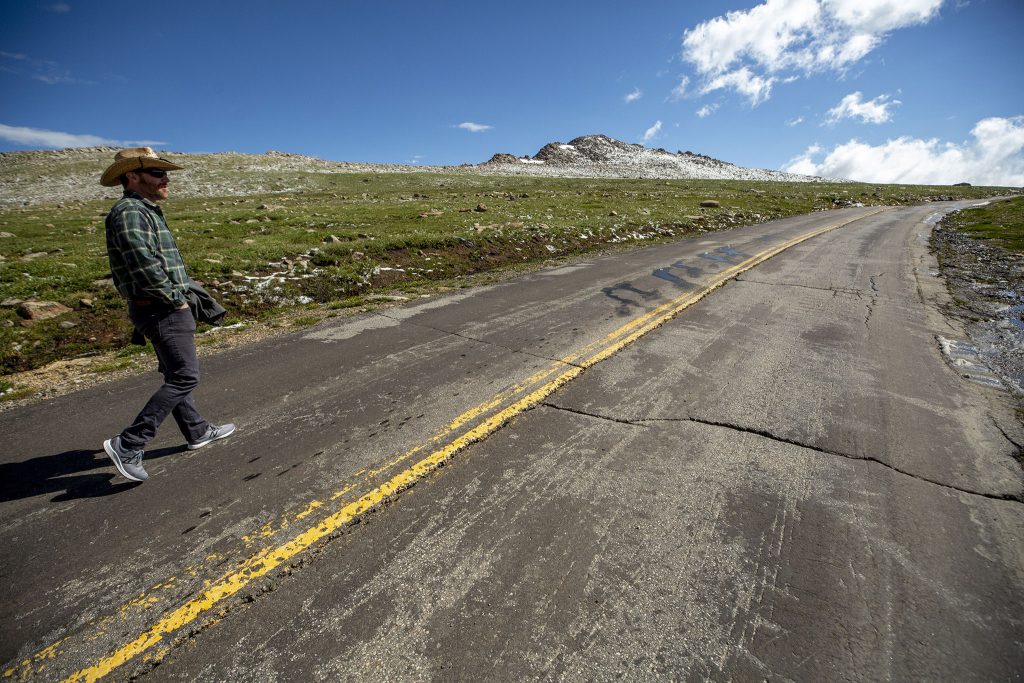
The new report Shaw and another CSU colleague authored recommends tearing out the existing road and building new embankments out of grapefruit- and basketball-sized stones, which, along with ventilation ducts, would allow heat to dissipate better and minimize permafrost melting.
It’s not yet clear how the road will be rebuilt. The Federal Highway Administration is currently developing a design review, said agency spokesman Neil Gaffney in an email, and construction is scheduled to begin in 2024.
Shaw said the proposed fixes would be more expensive than more conventional repair methods but would last longer and be more resilient to climate change.
“The world is full of problems,” he said. “But our job is to help understand those problems so we can develop solutions. And what is cooler than that?”
